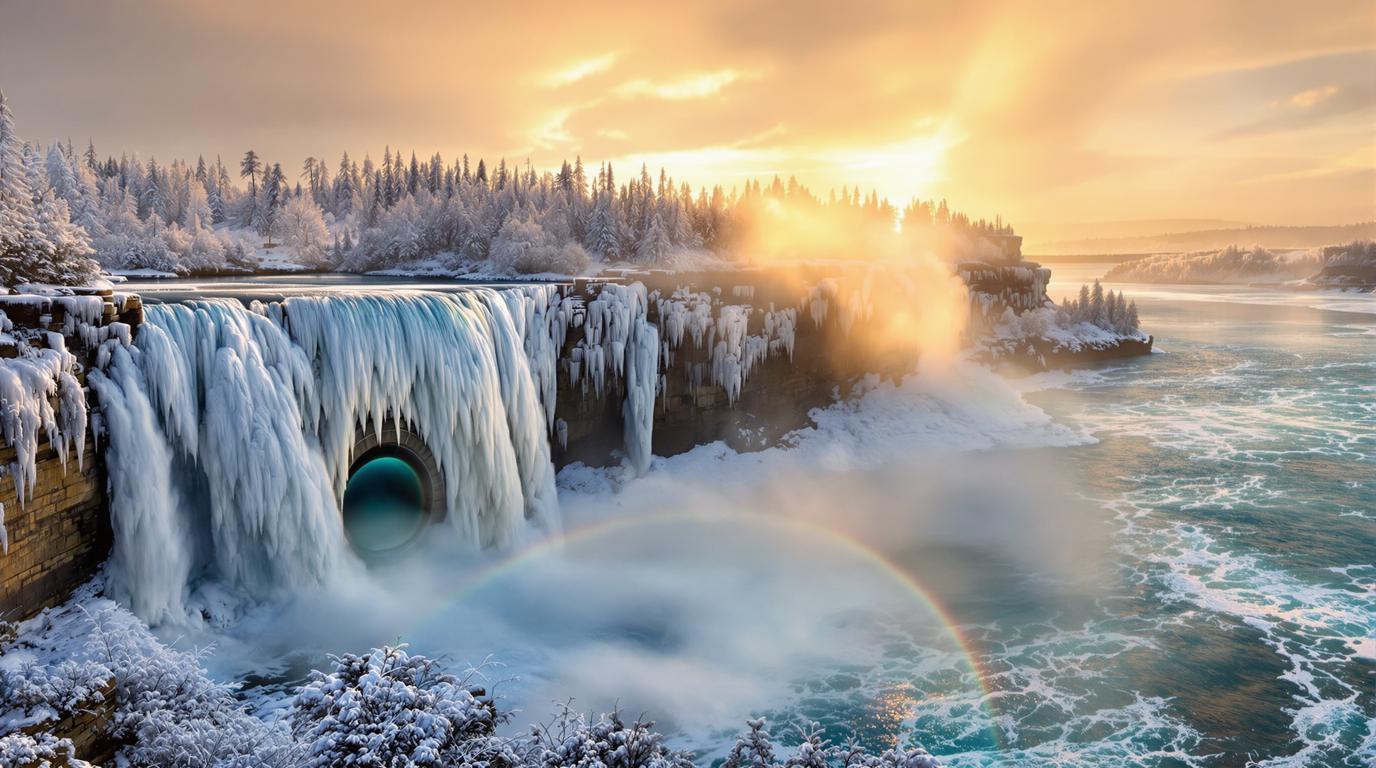Niagara Falls might be America’s most famous waterfall, but few visitors truly discover its hidden secrets. Each year, over 8 million tourists flock to this thunderous natural wonder straddling the US-Canadian border, yet most experience only a fraction of what makes this destination truly extraordinary.
Three waterfalls, two countries, one unforgettable experience
Contrary to popular belief, Niagara isn’t a single waterfall but three distinct cataracts: Horseshoe Falls (the largest and most powerful), American Falls, and the smaller Bridal Veil Falls. Together, they dump roughly 700,000 gallons of water per second over a 170-foot drop, creating that iconic mist visible from miles away.
The sheer power here is humbling. Standing at the observation deck, I felt the ground tremble beneath my feet as water crashed against ancient limestone formations carved over 12,000 years ago.
Journey behind the curtain of water
While most visitors snap photos from observation points, the most immersive experience lies beneath the surface. Journey Behind the Falls takes you through 130-year-old tunnels to emerge behind the massive curtain of water, where the deafening roar and constant spray create a primal connection to nature’s raw power.
“The first time I guided someone behind the falls, they burst into tears,” says Michael Reynolds, a veteran tour guide. “There’s something about standing where 2,800 cubic meters of water crashes past you every second that touches something deep in your soul.”
The forgotten ghost town below
Few visitors realize they’re standing above the remnants of a forgotten settlement. Beneath the manicured gardens of Queen Victoria Park lies the ghost town of Table Rock, once a thriving tourist village until it was consumed by erosion in the 1800s. Local legend claims visitors can still hear the church bells from the submerged village on quiet nights.
Rainbow hunting at dawn
The falls create their own microclimate, where rainbows appear with stunning regularity. While afternoon rainbows attract crowds, early morning visitors often witness double and even triple rainbows with significantly fewer people blocking the view.
Winter’s frozen wonderland
While summer draws the masses, winter transforms Niagara into a crystalline wonderland. The surrounding trees become encased in ice from the falls’ spray, creating what locals call “frozen mist forests” that glitter like diamond sculptures. The contrast between rushing water and frozen formations creates a landscape that rivals even the most exotic natural wonders.
Whirlpool wilderness secrets
Downstream from the main falls, the Niagara Whirlpool forms where the gorge makes a sharp 90-degree turn. This natural phenomenon spins with such force that objects caught in its current can circulate for days. The surrounding Niagara Glen offers hiking trails through ancient Carolinian Forest with 400-year-old trees that predate European settlement.
Taste the terroir of Niagara
The microclimate that creates the falls’ mist also produces ideal conditions for vineyards. The Niagara Wine Region produces world-class ice wines, created by harvesting frozen grapes in the dead of winter. The concentrated sweetness rivals dessert wines from regions with centuries more experience.
“Our weather extremes create flavor complexities that can’t be replicated elsewhere,” explains vintner Marie Lavalle. “The same mist that creates those famous rainbows infuses our grapes with something magical.”
Islands in the stream
Luna Island and Goat Island offer tranquil escapes from the crowds. Standing on Three Sisters Islands feels like discovering a hidden paradise amid the chaos. These forested havens provide panoramic views while surrounded by rushing water on all sides.
The electric city phenomenon
Niagara Falls powered America’s first major hydroelectric plant in 1895, forever changing how we harness energy. Today, you can tour the abandoned power stations, where massive turbines and cathedral-like architecture create an industrial wonderland that rivals modern museums.
Nature’s evolutionary laboratory
The isolation created by the falls has produced unique ecological niches where rare plant species thrive. The gorge microclimate supports flora typically found hundreds of miles further south, creating an evolutionary showcase similar to the Galapagos, albeit on a smaller scale.
Standing before this thundering cascade, watching morning light transform endless mist into dancing rainbows, I realized Niagara isn’t just a destination—it’s a primordial force that continues to shape the land and people drawn to its edges. The real magic of Niagara isn’t just in its impressive statistics, but in how it makes you feel impossibly small yet profoundly connected to something eternal.
